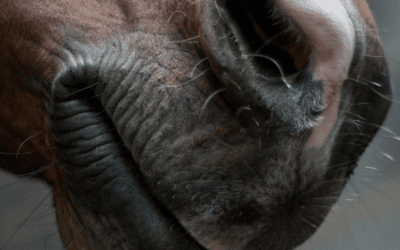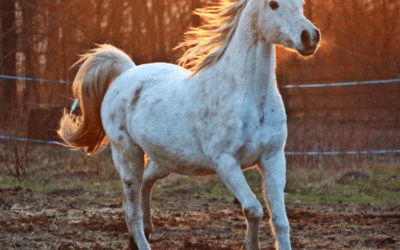Airway Hygiene: Everything You Need to Know to Help Your Horse
By Dr. Mary-Kate Burke MVB CertAVP PgCertVPS MRCVS
Whether your horse suffers from mild equine asthma or more severe inflammation causing heaves (recurrent airway obstruction or RAO), airway hygiene is one of the ways that you can help your horse with breathing problems. In this article, we’ll cover what airway hygiene in horses is, as well as some ways you can reduce your horse’s exposure to airway irritants.
How will my vet treat my horse’s asthma?
Equine asthma can cause a variety of signs or symptoms including coughing, poor performance, or increased respiratory effort. Often veterinary surgeons will treat horses suffering from asthma with steroids – like prednisolone, dexamethasone, or beclometasone – or bronchodilators such as clenbuterol or salbutamol. These drugs can be administered through a variety of routes including orally, intravenously, or via inhalation. While these drugs act to reduce airway inflammation and hyperreactivity, they are not as effective when used in isolation. A recent study conducted in Canada showed that improving the hygiene of the air in the horse’s environment is an exceptionally important aspect of treating equine asthma.
What does the research tell us?
This Canadian study examined the response to treatment of 12 horses following exposure to air contaminated by bushfire smoke for one month. All of the horses displayed coughing and poor performance following this exposure. First, they did exercise tests and took samples from the lungs using a wash. Half of the horses were treated with steroids and half with no drugs. The horses were also moved to an area of improved air quality or lower air particulate count at this point.
After 20 days of treatment, the tests were repeated. A bronchodilator was given to all horses and the tests were repeated again the next day. The steroids had no effect on the lung wash results and the bronchodilators did not improve aerobic capacity on exercise testing. The improvement of the air quality, by the reduction of air particulate counts, had the biggest effect on aerobic capacity.
How does this apply to my horse?
This study’s findings can be applied to asthmatic horses kept in stable or field environments. Equine asthma is commonly triggered by allergens such as moulds, dust, or pollens. Reducing the air particulate count in your horse’s stable will reduce the amount of these allergens in the environment and hence aid in the treatment of your horse’s asthma.
How can stable ventilation help my horse?
Ventilating your horse’s stable is an excellent way to improve the air quality in their stable. A study back in 1987 found that there were lower amounts of moulds and bacteria in the beds of horses with better stable ventilation. Providing your horse with two air openings in their stable, i.e. stable door and stable window, will massively improve the ventilation of your horse’s environment. If you are worried about your horse getting cold in the winter, wrapping your horse up in more rugs would be a more favourable solution than closing the window or top door.
How can I reduce the dust in my horse’s stable?
Reducing the amount of dust in the stable will also improve the air quality. Switching from straw to dust-free shavings or paper bedding will greatly reduce the amount of dust. While there is a large upfront cost, installing rubber matting in your stable will not only reduce the dust in your horse’s stable but will also reduce the amount of bedding your horse requires. This can save you money (and time mucking out) in the long run!
It is also prudent to avoid storing rugs or numnahs in your horse’s stable as they trap dust. You should also avoid ‘deep littering’ for asthmatic horses as this causes ammonia build-up. Ammonia gas can also irritate the airways.
Does what I feed my horse make a difference?
Replacing dry hay — which has a tendency to be contaminated and dustier — with haylage or soaked/steamed hay will also reduce the amount of dust in your horse’s environment. Soaking hay for a short amount of time like 30-60 minutes is an acceptable and cost-effective method for the reduction of dust, moulds, and other allergens. However, it is important to feed the hay quickly after soaking to prevent mould growth. Steaming hay is thought to be a more effective method of decontaminating hay while also resulting in more palatable hay for your horse. Hay steaming equipment can be costly so purchasing a hay steamer with some of your fellow liveries at your yard may help make it a more affordable option.
Haylage is another option for feeding horses with equine asthma. Haylage is grass that has been cut in the same manner as hay and allowed to wilt slightly before being wrapped in plastic. This wrapping process removes the oxygen and as such preserves the haylage. It generally has a lower dust content as well as less contamination than hay, making it a fantastic option for asthmatic horses. However, it is important to remember that haylage is also more nutrient dense with a higher calorie content than hay. This is important to consider if your horse is on a low-calorie diet for weight management or control of other health conditions such as laminitis.
My yard won’t allow me to make changes to my horse’s stable – what do I do?
Many of the environmental alterations discussed in this article thus far may be difficult to implement in a lot of livery yards. But fear not, there are plenty of simple things you can do to improve the air quality your horse is exposed to. Turning your horse out 24/7 or as much as possible will make a significant difference to their lower airway inflammation due to lower air particulate counts outside. The only exception to this is if your horse suffers from pasture-associated or summer-associated airway obstruction. If this is the case, discussing your horse’s treatment and management with your veterinary surgeon would be the best course of action.
Removing your horse from their stable while mucking out will expose them to less dust. Mucking out will increase the air particulate count in the stable as the movement of the bedding will cause dust to be released into the air. So even if you are unable to change your horse’s bedding, you can still make a difference to their environment. Stabling asthmatic horses away from feed or hay stores and muck heaps will also improve their air environment.
Take Home Message
While a variety of drugs can be used to effectively reduce lower airway inflammation in the horse and improve their clinical signs, environmental changes offer an effective and cheap long-term solution for management of equine asthma.
Clarke, A.F. Madelin, T.M. Allpress, R.G. (1987), The relationship of air hygiene in stables to lower airway disease and pharyngeal lymphoid hyperplasia in two groups of Thoroughbred horses. Equine Veterinary Journal, 19, pp. 524-530.
Bond, SL. Greco-Otto, P. MacLeod, J. Galezowski, A. Bayly, W. Léguillette, R. (2020) Efficacy of dexamethasone, salbutamol, and reduced respirable particulate concentration on aerobic capacity in horses with smoke-induced mild asthma. Journal of Veterinary Internal Medicine, 34, pp. 1– 7.
Word Count: 1039 (excluding references)





